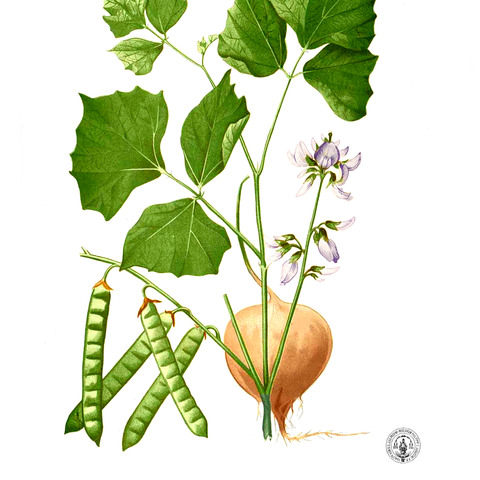Vines, perennial, twining or erect, with fleshy tubers. Leaves pinnately 3-foliolate, stipulate; leaflets large, stipellate, ovate or rhomboid, entire or sinuately lobed. Racemes or panicles axillary, rachis often nodose. Bracts caducous; bracteoles small, subpersistent or minute and caducous. Calyx 2-lipped, upper lip emarginate, lower 3-toothed. Corolla violet or white, exserted from calyx; standard broadly obovate, appendaged with 2 inflexed auricles; wings oblong or falcate, often adherent to middle of keel; keel sometimes beaked, subequal to wings. Stamens diadelphous; vexillary stamen free at base, connate with tube in middle; anthers uniform. Ovary many ovuled, hirsute, hairs extending up style, forming a false beard; style filiform, inflexed adaxially; stigma lateral to subterminal. Legumes linear-oblong, constricted between seeds. Seeds compressed, suborbicular or transversely oblong.

